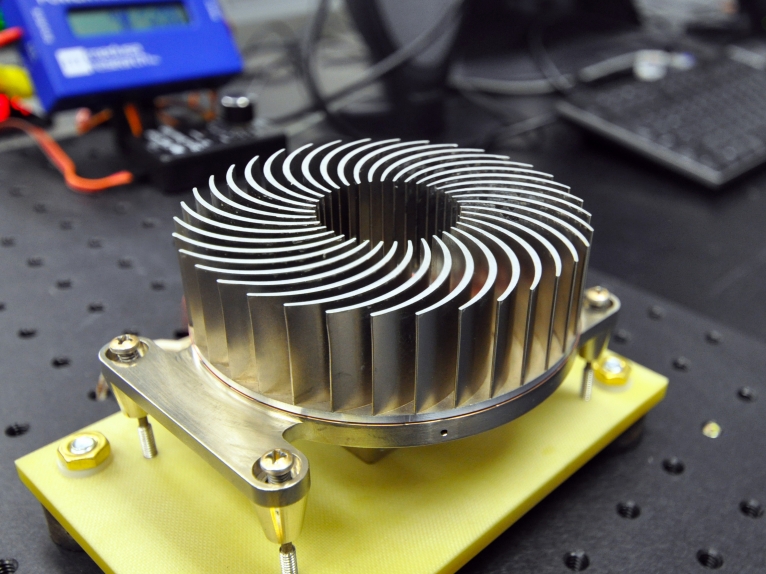Tuesday, 23/12/2025 | 22:27 GMT+7
Every year, the information technology sector spends almost $7 billion on electricity costs, and much of that money goes to cooling computer processing units (CPUs) in data centers. At the Energy Department’s Sandia National Laboratories, researchers have developed an innovative new air-cooling technology -- the Sandia Cooler -- that improves the way heat is transferred in computers and microelectronics, significantly reducing the energy needed to cool CPUs in data centers. If the technology can be successfully scaled up and applied to other applications like heating, ventilation and air conditioning, researchers say the Sandia Cooler has the potential to decrease overall electrical power consumption in the U.S. by more than 7 percent.

To understand the technological advances in the Sandia Cooler, it helps to understand traditional CPU coolers. Comprised of a fan and a finned aluminum or copper heat sink, traditional CPU coolers have longstanding technological problems. Their effectiveness is hampered by the “boundary layer effect” -- a thin layer of motionless air that adheres to the heat sink fins. This layer of “dead air” acts like an insulating blanket, trapping warm air. While the spinning fan blades of conventional CPU coolers remain relatively dust free, the stationary heat sink fins collect dust, which greatly reduces airflow and the CPU cooler’s ability to convey heat to the surrounding air.
With an innovative, compact design that solves the problems traditional CPU coolers face, it is no surprise that the Sandia Cooler is a recipient of R&D Magazine’s 2012 R&D 100 Awards and one of three to receive R&D Magazine Editor’s Choice Award. The Sandia Cooler combines a fan and a finned metal heat sink into a single element called a heat-sink-impeller in which the fins of the heat sink rotate, improving heat transfer by a factor of ten. The unique geometry of the rotating fins provides for an extremely quiet operation, and the rapidly rotating fins minimize dust build up.
Supported by the Energy Department’s Building Technologies Program, the Sandia Cooler is a breakthrough technology with the potential to advance heat exchangers beyond what is available today. Heat exchangers are used to cool the surrounding air in microelectronics, refrigeration, heating, air conditioning and nearly every application that generates waste heat -- accounting for 53 percent of building energy consumption. While currently available for licensing for electronic cooling and LED lighting technology, researchers continue to refine the Sandia Cooler and are working on scaling up this new heat exchanger technology for applications such as heating and cooling systems.
Truong Duy








 Webinar 2: “Financial Support for Energy Efficiency Enterprises – Opportunities and Challenges”
Webinar 2: “Financial Support for Energy Efficiency Enterprises – Opportunities and Challenges”
 Vietnamese enterprises achieve green growth and cut costs through energy efficiency
Vietnamese enterprises achieve green growth and cut costs through energy efficiency
 Capacity Building for Program Implementing Entity
Capacity Building for Program Implementing Entity
 Enhance Energy Efficiency Knowledge for Managers of Cement Industrial Enterprises
Enhance Energy Efficiency Knowledge for Managers of Cement Industrial Enterprises
 Promoting Energy Efficiency for Technical Staff of Brick and Ceramic Sector
Promoting Energy Efficiency for Technical Staff of Brick and Ceramic Sector
 Capacity building for participating financial institutions of the VSUEE Project
Capacity building for participating financial institutions of the VSUEE Project
 Capacity building for participating financial institutions in Ho Chi Minh City
Capacity building for participating financial institutions in Ho Chi Minh City